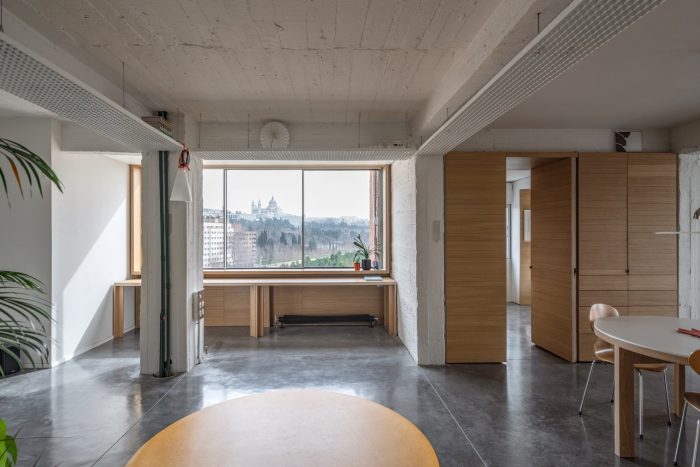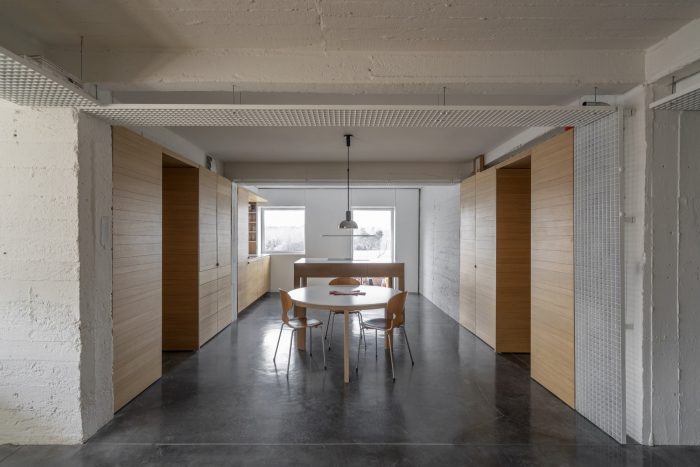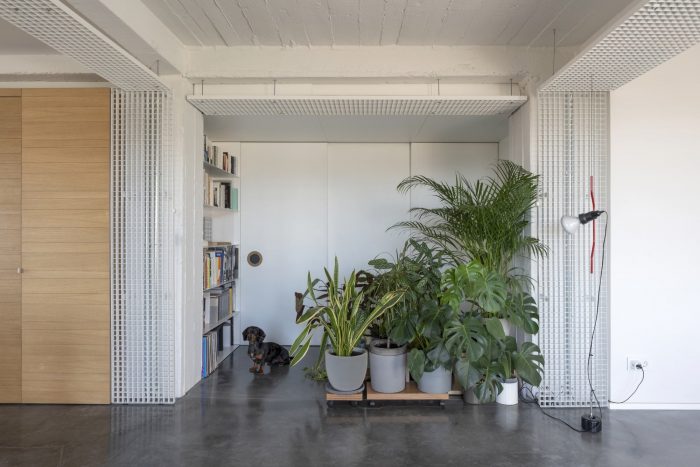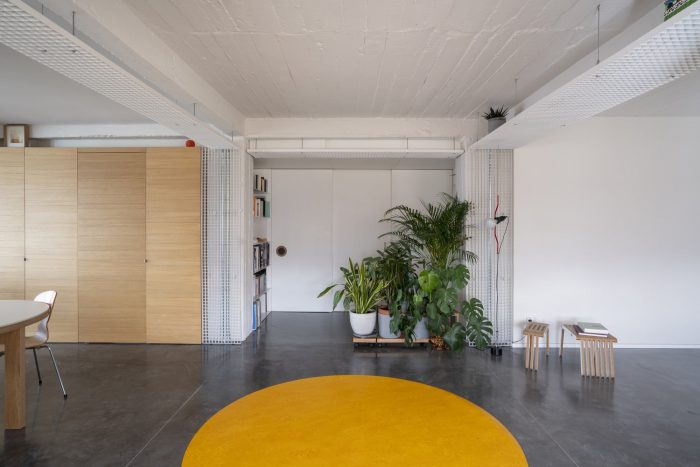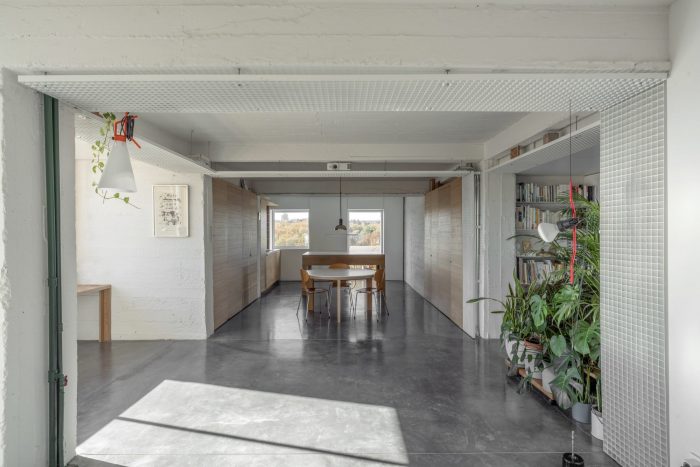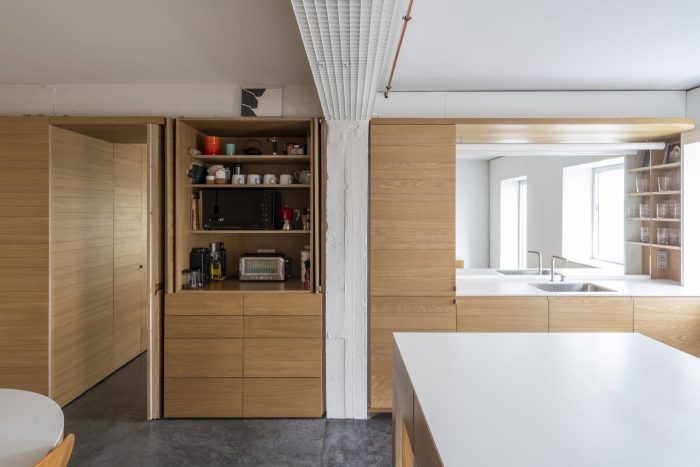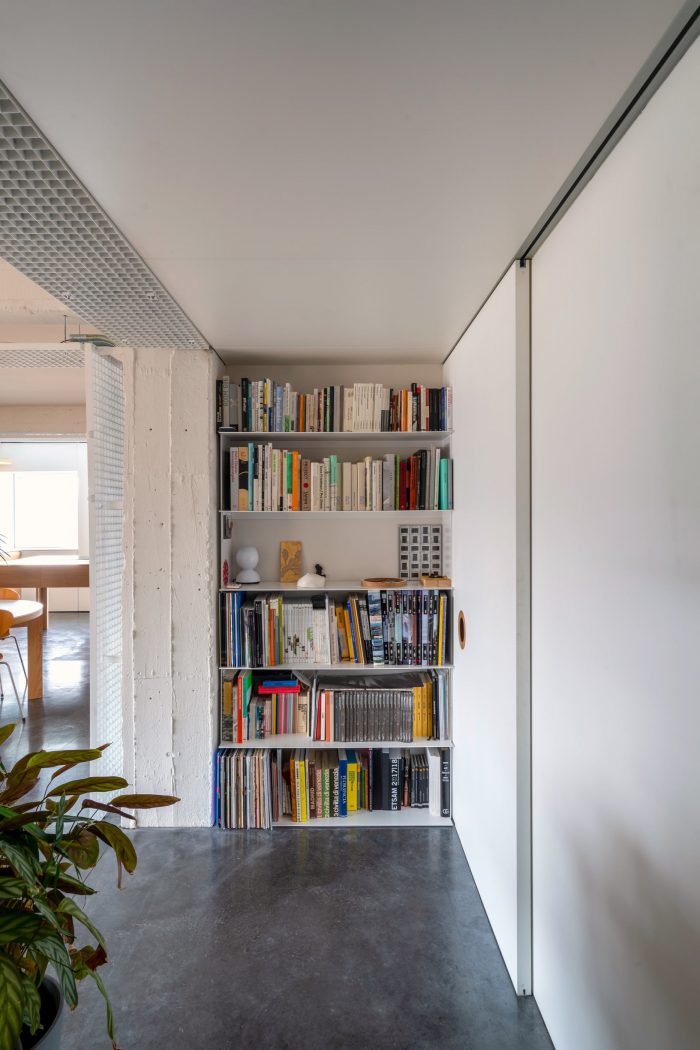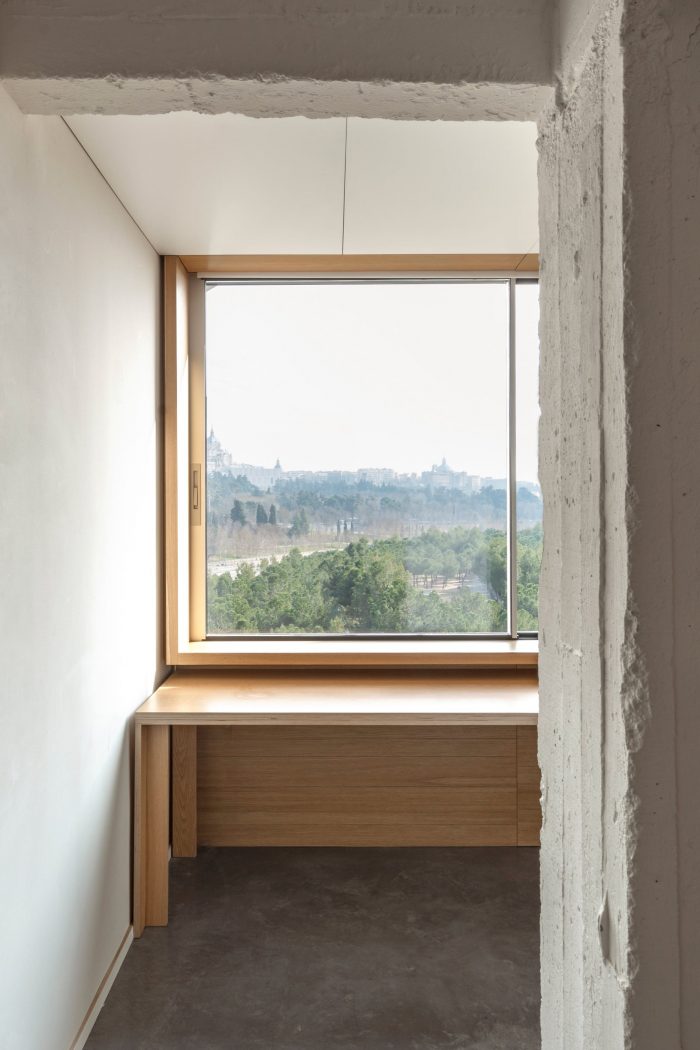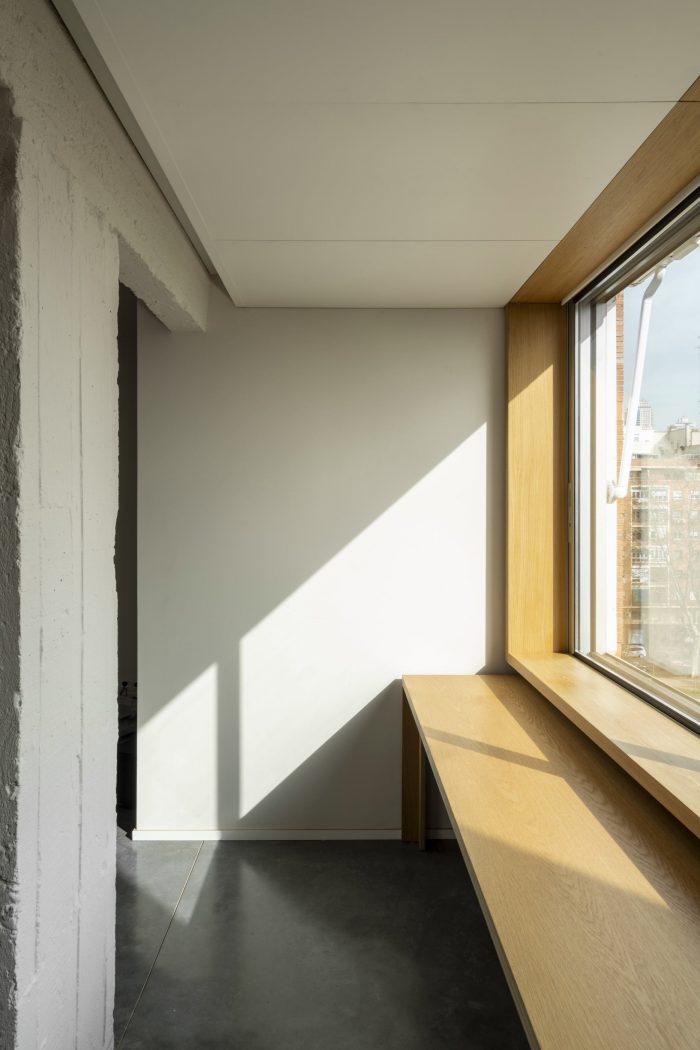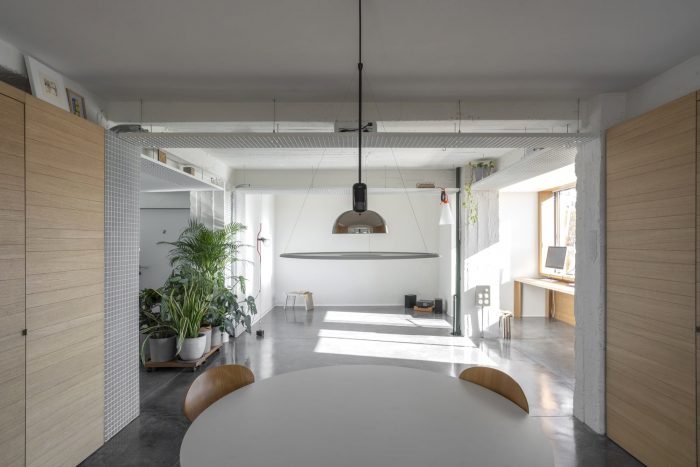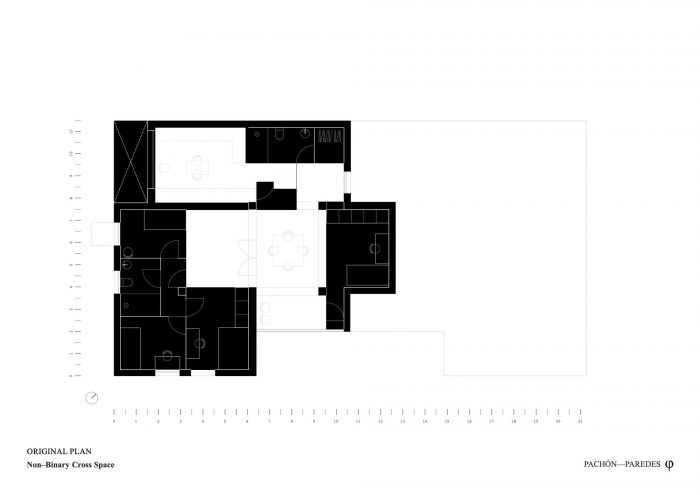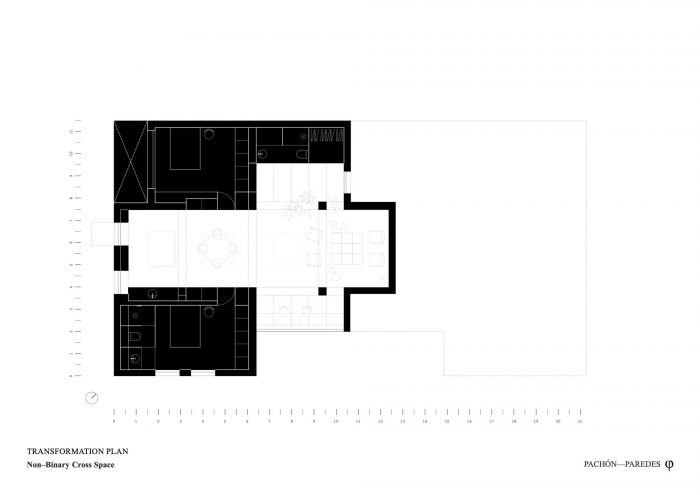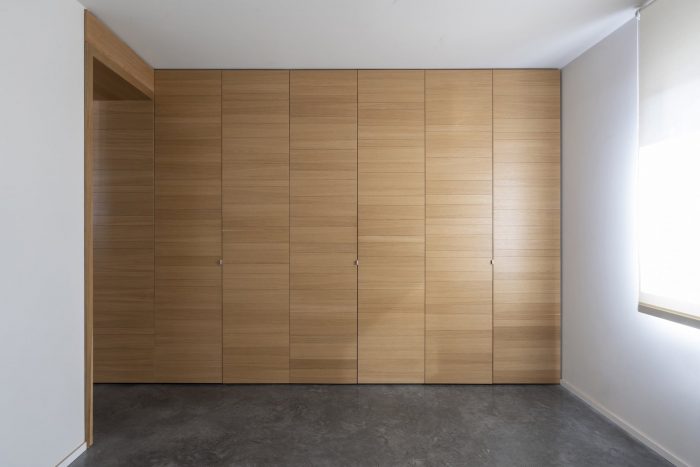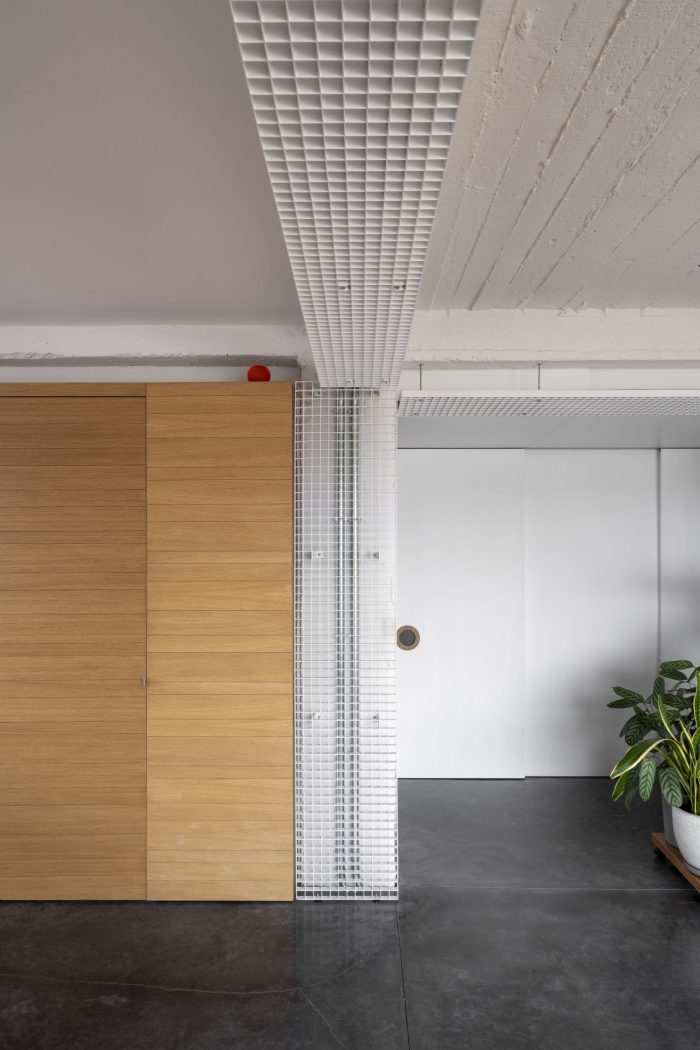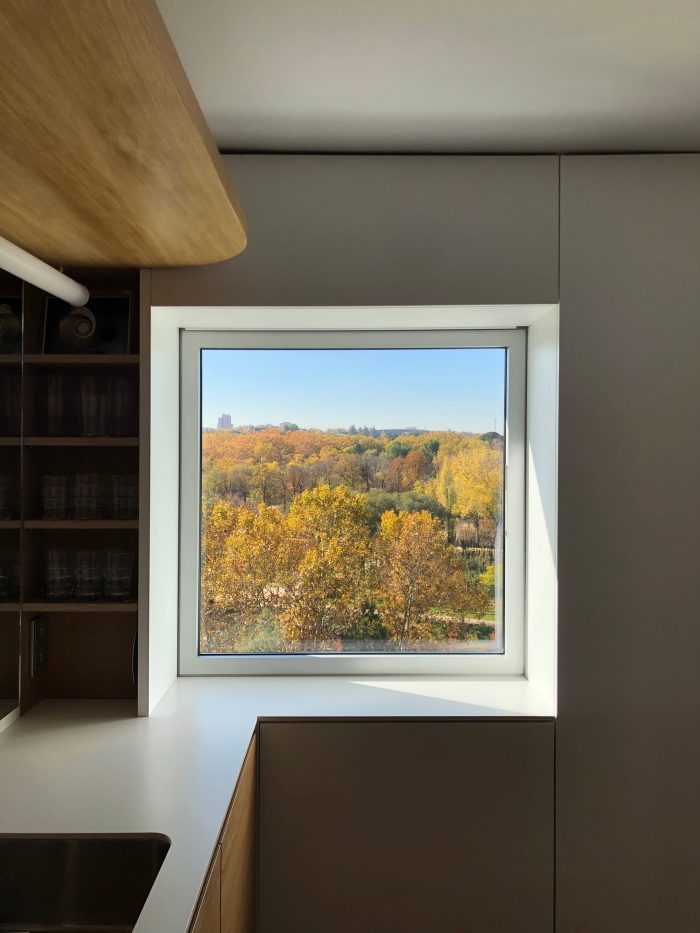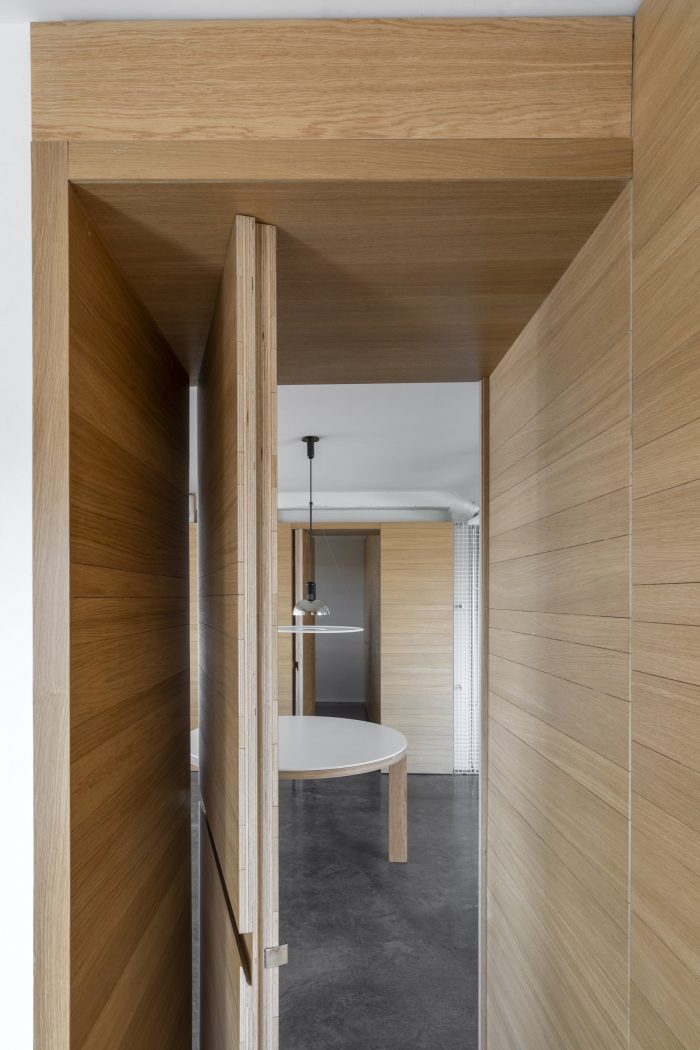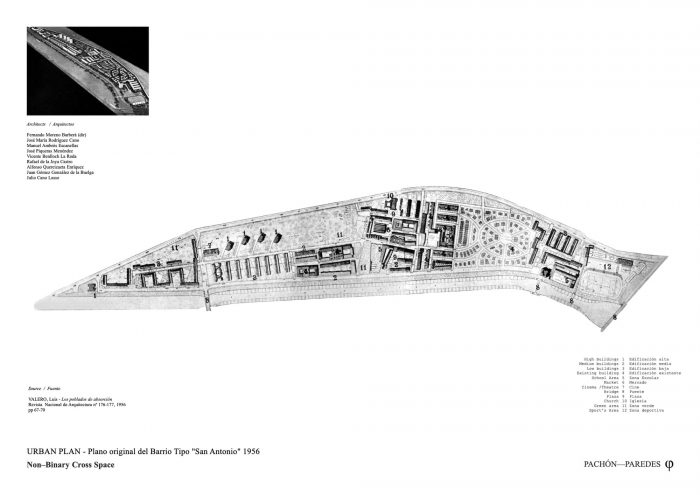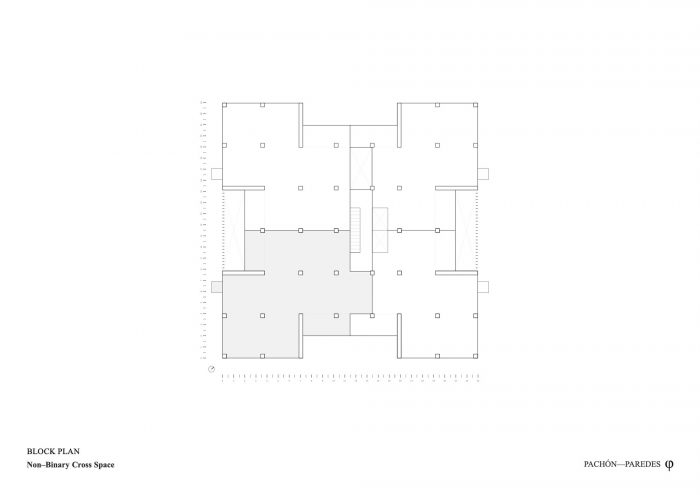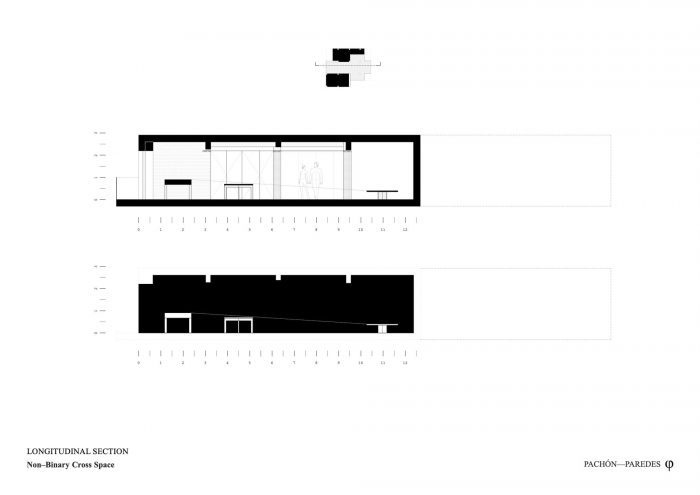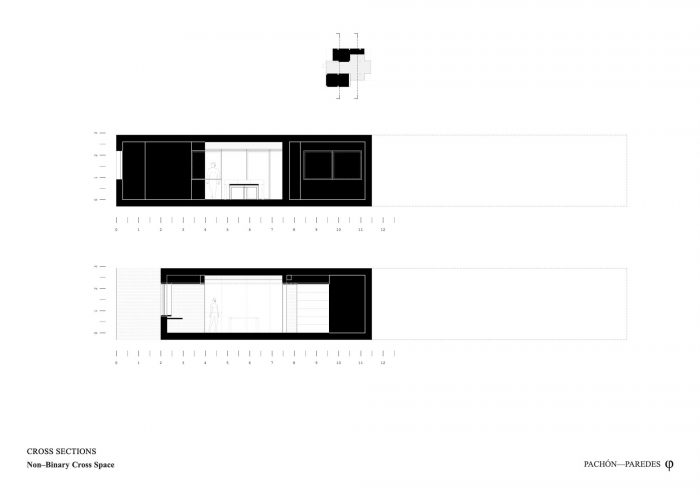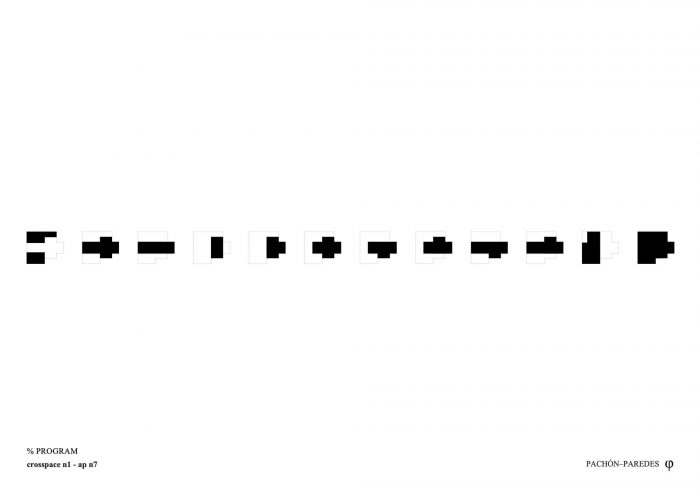以前的空间是一个严重分割的公寓,9个 “房间 “分布在仅100平方米的地方。五十年代末,由建筑师联盟集团(由Moreno Barberá领导,由Cano Lasso、De la Joya或Benlloch La Roda等人组成)建造,这栋15层的塔楼是目前城市公园胜利的开始,”马德里河”。这座塔,位于城市的一个非常重要的界限,是 “圣安东尼奥殖民地 “的一部分,这是一个城市实验,现在已经被遗忘了,它提供了一个线性城市岛屿的答案,被坎波之家(一个巨大的城市森林)、M-30(城市高速公路)、河流和城市中心包围。从现代运动中继承下来的城市方案,沿河分布了几种建筑类型,将自然和建筑区域与各种公共服务混合在一起……创造了一个城市,并允许该地区作为一个社区生存到今天。
The pre-existing space was a heavily compartmentalized flat with 9 “rooms” distributed in only 100m². Built in the late fifties by the union group of architects (lead by Moreno Barberá, and composed among others, by Cano Lasso, De la Joya, or Benlloch La Roda), the 15-story tower-block crowns the beginning of the current urban-park triumph “Madrid Río”. The tower, located in a very important limit for the city, is part of the “Colonia de San Antonio”, an urban experiment, forgotten nowadays, that provided an answer to a linear urban island surrounded by the Casa de Campo (a vast urban forest), the M-30 (urban motorway), the river and the city center. The urban proposal, inherited from the modern movement, spread out along the river several building typologies, mixing natural and constructed areas with an assortment of public services… creating a city and allowing the area to survive as a neighborhood nowadays.
该提案的实验性本质源于功能上的缺乏定义和经济上的限制。我们需要不同性质的栖息地,这些栖息地可以在某种程度上单独或集体地共存于同一空间,在同一主体中。工作、休闲运动和家庭栖息地需要在一个必须是 “非二元 “的空间中转变、适应和共存。一个固定的混合空间是不需要的,但它必须具有根据其用户的需求和具体环境而变化的时空能力,无论是每天、每周还是长期。
The experimental essence of the proposal was born from a functional lack of definition and an economic limitation. There is a need for habitats of different natures that can, somehow, co-exist either individually or collectively in the same space, in the same body. Working, leisure-sports and domestic habitats need to transform, adapt and co-exist in a space that has to be “NON-BINARY” by force. A fixed hybrid space is not required, but it must have the spacetime capacity of changing depending on the needs of its users and the specific contexts, whether this is daily, weekly or for long periods of time.
因此,通过定义创造这些协同作用的规则,建筑的原始结构被揭开。潜在的限制被形成,其形状为拉丁十字形平面,是塔楼类型结构现实的结果,但否定了原有的内部分隔。这被定义为一个 “结构 “空间,其中没有与功能相关的空间:客厅、等候室、舞厅或瑜伽室;墙栏或货架单元、办公室或书房;饮食室或会议室、厨房或木工区等。空间不是其功能的继承者,而是与结构、能量、时间或谁使用、居住或利用它们的自由解释有关的一系列情况。
Thus, by defining the rules that create these synergies, the original structure of the building is unveiled. Latent limits are formed, with the shape of a Latin-cross plan, as a result of the structural reality of the tower typology but negating the original internal compartmentalization. This is defined as a “structure” space in which there are no function-associated spaces: living room, waiting room, ballroom or yoga studio; wall bars or shelving unit, an office or a study; an eating room or meeting room, a kitchen or woodworking zone, etc. Spaces are not heirs of their function, but of a series of circumstances related to structure, energy, time or freedom of interpretation from whoever uses, lives, or exploits them.
因此,充满拉丁十字形的空气塑造了非二元的、非定义的空间,被分为5个大小相似的交叉象限;一个杂乱的空间,几乎是一个舞台,不同的戏剧和流派可以在上面发生并提供背景。另一方面,拉丁十字的反面象限包含了 “程序化 “的空间,那些具有更永久用途的空间,可以支持在 “自由 “空间发生的任何功能。
As so, the air that fills the Latin-cross shapes the non-binary, non-defined space, divided into 5 crossed quadrants of similar size; a miscellaneous space, almost a stage upon which different plays and genres can take place and provide the context. On the other hand, the inverse quadrants of the Latin cross encompass the “programmed” spaces, those with a more permanent use, that can support any of the functions that take place in the “free” space.
家具、物品、材料和建筑细节也必须是非二元的:厨房的岛可以作为一个切割台,墙壁的纹理和它们的结构并不能说明它们是墙壁、镶板、门或橱柜。没有任何东西与特定的功能相关联。针对个别功能的 “化妆”–家用电器或餐具,在家庭方面;电脑、文具或打印机,在办公室方面;墙栏、设备或高端耐力板,在体育/舞蹈方面–被隐藏、掩饰或内置,避免了对功能的所有提及,而且,正如雅克-洪德拉特所说,”没有破坏使用的自由”。
Furniture, objects, materials, and construction details had to be non-binary as well: the kitchen- island doubles as a cutting table, and wall textures and their construction do not clarify if they are walls, paneling, doors, or cupboards. Nothing is associated with a specific function. The “make-up” specific to an individual function – household appliances or tableware, in the domestic facet; computers, stationery, or printers, in the office facet; wall bars, equipment, or high-endurance screed, in the sports/dancing facet – is hidden, disguised or built-in, avoiding all reference to the function, and, as Jacques, Hondelatte said, “not undermining freedom of use”.
当它发生在一场戏或一个身体中时,只有 “二元结构 “的共同自然元素是明显的:结构、地板、天花板、皮肤和墙壁、光线、服务、椅子、桌子和窗户。
As it occurs in a play or a body, only the common natural elements of the “binary architectures” are evident: structure, flooring, ceilings, skin & walls, light, services, chairs, tables, and windows.
Architects: Pachon-Paredes
Area : 101 m²
Year : 2022
Photographs :Luis Asín
Manufacturers : Luis Asín
Lead Architect : Luis G. Pachón, Inés García de Paredes
Construction : TRANSFORMA / Edite 1982
City : Madrid
Country : Spain


